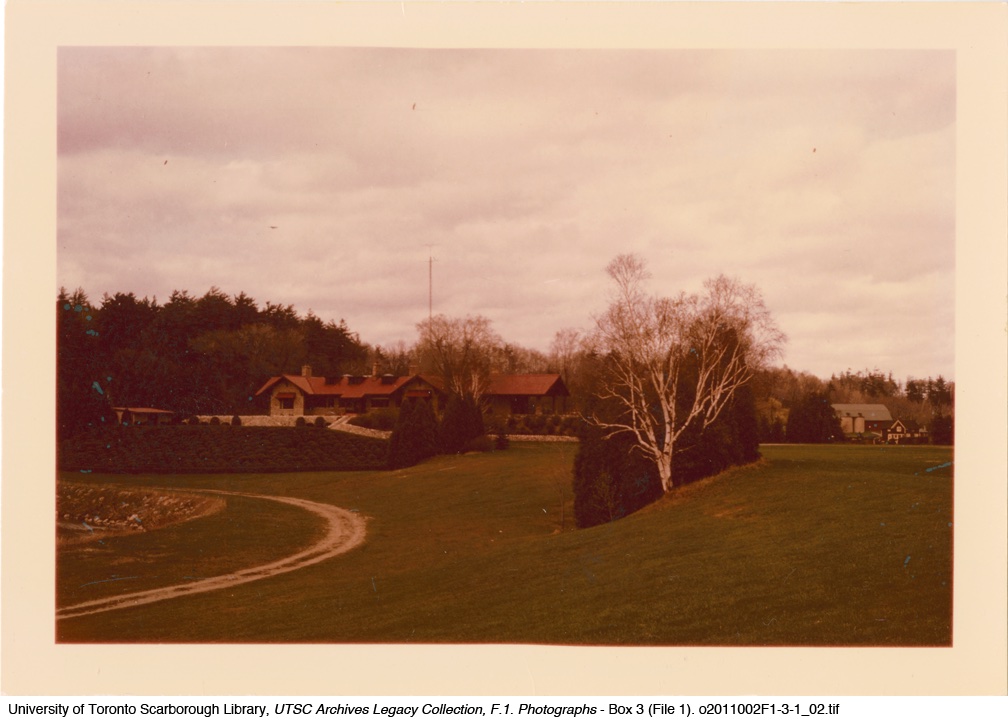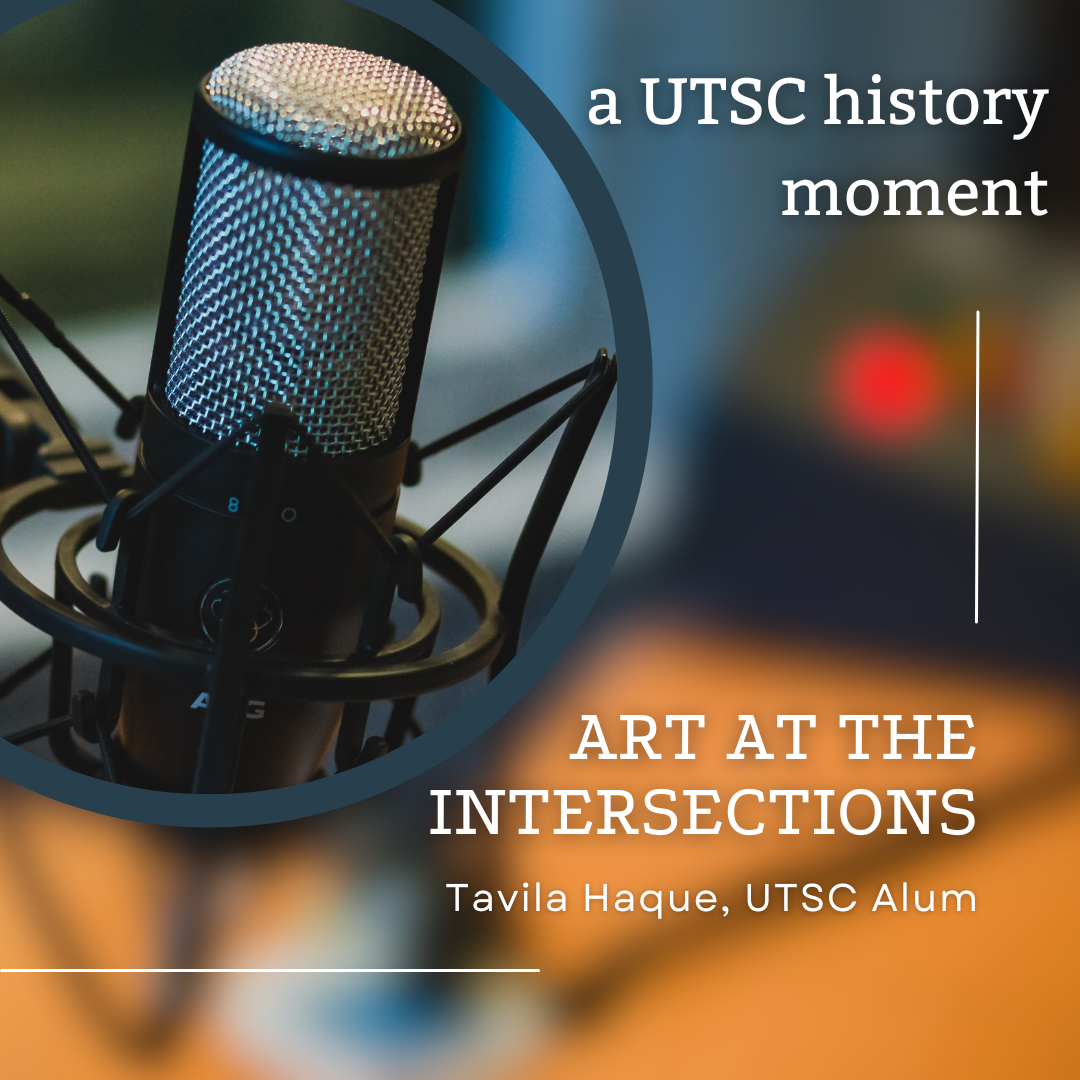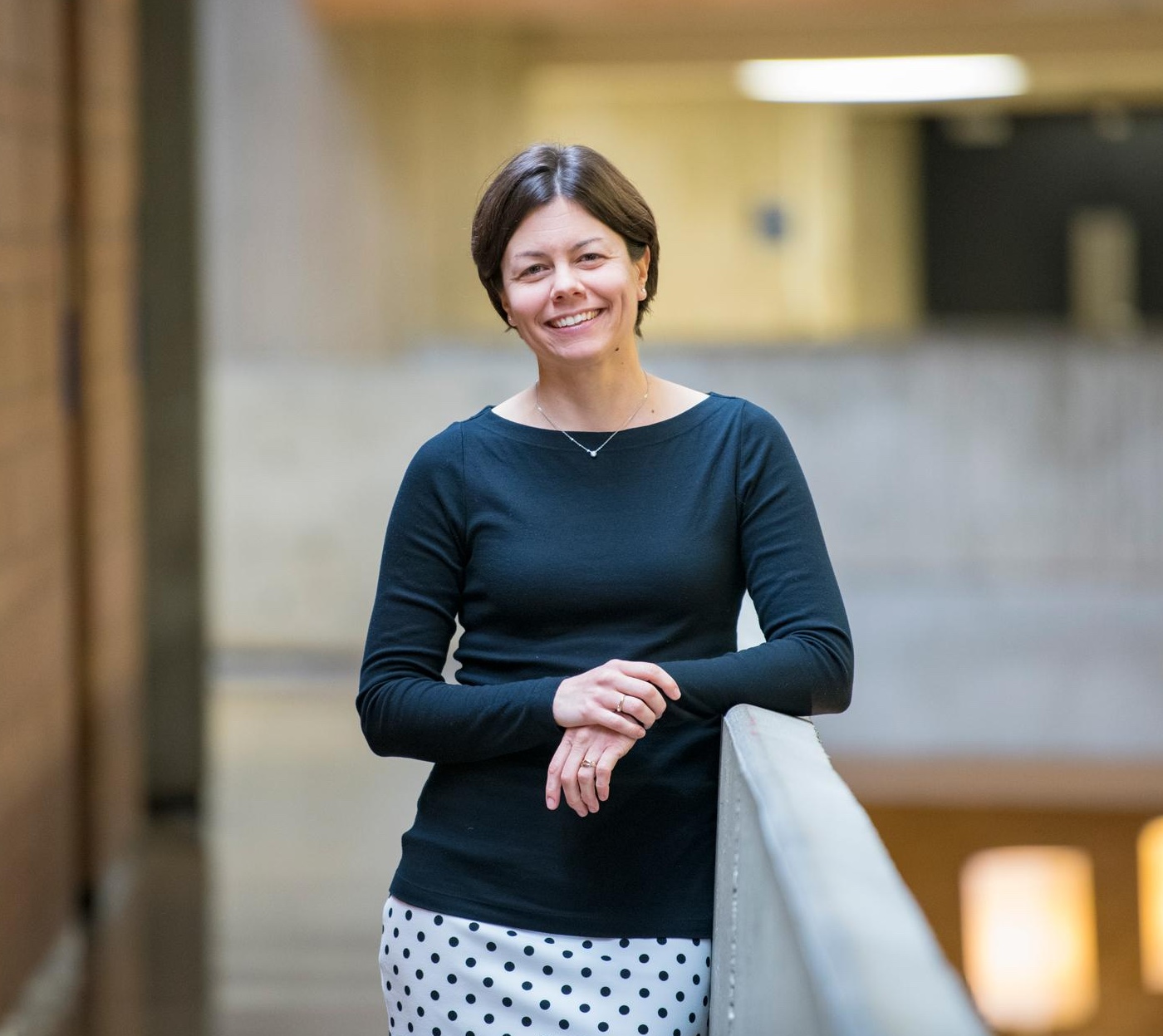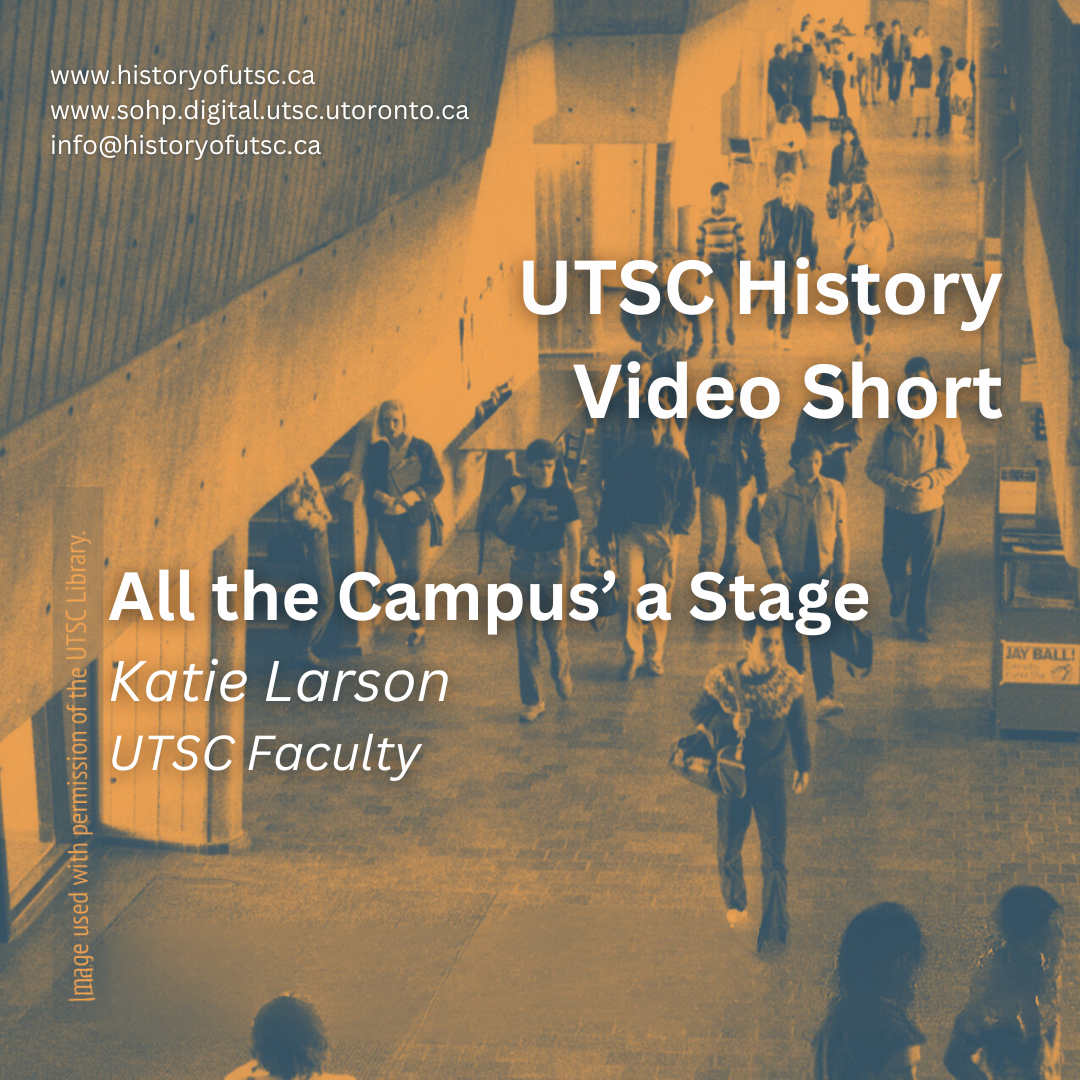UTSC is currently undergoing a phase of unprecedented growth. This can largely be attributed to the various pressures exerted by the school’s ever-expanding student body: more students mean a need for more faculty, more programs, and, crucially, more space. On this last point, the university is making substantial progress, with several new instructional, research, and housing facilities slated to be built in the coming years; in long-term numbers, this could equate to up to six million square feet of additional new space, resulting in a spatial footprint equivalent to that of the St. George campus, according to the UTSC Campus Master Plan (Business, Operations, and Strategic Affairs, University of Toronto Scarborough 2011). There is, it seems, no stopping UTSC.
However, as in any project, obstacles are inevitable. And curiously enough, the university has a history of encountering peculiar obstacles in its attempts to expand the Scarborough campus, one of which took the form of a Miss Lucy Doyle.
Born in 1880 in Des Moines, Iowa, Lucy Swanton Doyle gained fame for her work with the Toronto Telegram as one of the country’s first gossip columnists. As one reporter put it, Doyle “was notorious for gaining access to places where she was not supposed to be and for interviewing people no one else could get to,” with stories abounding about her climbing through bathroom windows and chartering boats to get the latest scoop; these exploits, combined with her outspoken writing style, allowed her to develop a persona as one of the city’s most celebrated, but nonetheless formidable, women (Bromfield 1985). What might such a woman have to do with UTSC, you might ask? Well, sometime in the early 1900s, Doyle bought some property in the Highland Creek Valley near Old Kingston Road, consisting of a triangular tract of approximately one and a half acres of land (Plumptre 1972). A historic schoolhouse on this land served as Doyle’s home until the schoolhouse burned down in 1951, after which Doyle found residence with a Mrs. Clark in the historic log cabin at Scarborough’s Guild Inn; meanwhile, the construction of Scarborough College commenced in full swing just nearby (Bromfield, 1985; Plumptre 1972). When the construction was completed, it became apparent that Doyle’s land, now uninhabited, was very close to the campus’ entrance grounds, so the university, fearing that the land might “fall into unscrupulous hands,” attempted to expropriate the property from Doyle (Plumptre 1972). Doyle, however, refused. She was determined to keep her land, rejecting multiple invitations from the university to sell — and, in opting to retain her land ownership, even gave up qualifying for a supplementary old age pension (Plumptre 1972; Ainsworth 2019). Thus, for at least the first few years following Scarborough College’s opening, the university was forced to navigate around an unceded triangular gap, courtesy of Lucy Doyle.
After eighteen years at the Guild Inn, Doyle was moved to a nursing home in Bobcaygeon and eventually passed away in 1971 at the age of 91 (Bromfield 1985). Before her death, in 1967, the trustee of her estate claimed she made a “wish to complete the sale of the property to the university” and began the required procedures to facilitate the process, with the land ultimately being sold for $4,500 in 1972 (Russell 1967; Gregory 1972). With this acquisition, which was framed by the university as a testament to the “indomitable spirit” of Lucy Doyle, “our valley grounds” were finally “made complete” (Plumptre 1972). A more critical eye, however, might question the integrity of this acquisition. Why, after all, would Doyle hold on to the land for all her life, even giving up a pension for it, if she ultimately wished to sell it to the university? Moreover, doesn’t it seem terribly convenient for the university to acquire the land only when Doyle was near death? These questions don’t have any easy answers, but if nothing else, they serve to remind us that the land on which we work and study is much more than a simple acquisition; it carries a rich history, one that stretches far beyond the four walls of our university and connects us through time and space to those who came before us.
Dora Mavor Moore, a close friend of Doyle’s who is best known as the founder of the New Play Society, was later in contact with the university regarding the best way to commemorate Doyle. It was eventually decided that a triangular stone memorial with a commemorative plaque — likely in recognition of the shape of Doyle’s property — would be appropriate, with the monument being erected and unveiled to the public in 1973 (Moore 1973; Ball 1973). Today, it can be viewed at 130 Old Kingston Road near Miller Lash House.
And thus goes the tale of Miss Lucy Doyle and her triangle of land.

Bibliography
Ainsworth, Amelia. 2019. “Land Use Report: 1960s-1990s.” History of UTSC, Oct. 30, 2019.
Ball, J.L. 1973. Correspondence to Dora Mavor Moore. n.p., Sept. 10, 1973. Retrieved from University of Toronto Scarborough Library, Archives & Special Collections. UTSC Archives Legacy Collection, File 002-E-9-13-9. https://discoverarchives.library.utoronto.ca/index.php/lucy-doyle-memorial.
Bromfield, Mark. 1985. “Scarborough Memorial Honors Legendary Writer.” The Villager. Retrieved from University of Toronto Scarborough Library, Archives & Special Collections. UTSC Archives Legacy Collection, File 002-E-9-13-9. https://discoverarchives.library.utoronto.ca/index.php/lucy-doyle-memorial.
Business, Operations, and Strategic Affairs, University of Toronto Scarborough. 2011. “Campus Growth – The UTSC Master Plan.” University of Toronto Scarborough, April 2011. https://www.utsc.utoronto.ca/bosa/campus-growth-utsc-master-plan.
Gregory, K.S. 1972. “Estate Lucy Swanton Doyle, CR 11395-CPA, Vacant Land – Pt. Lot 9, Conc. 1 in the Twp. of Scarborough.” Correspondence to C.P. Allen. n.p., Jan. 17, 1972. Retrieved from University of Toronto Scarborough Library, Archives & Special Collections. UTSC Archives Legacy Collection, File 002-E-9-13-9. https://discoverarchives.library.utoronto.ca/index.php/lucy-doyle-memorial.
Moore, Dora Mavor. 1973. Correspondence to J.L. Ball. n.p., July 17, 1973. Retrieved from University of Toronto Scarborough Library, Archives & Special Collections. UTSC Archives Legacy Collection, File 002-E-9-13-9. https://discoverarchives.library.utoronto.ca/index.php/lucy-doyle-memorial.
Plumptre, A.F.W. 1972. “Memorandum: Lucy Doyle Property.” Memorandum to J.L. Ball. Scarborough College, University of Toronto, Jan. 24, 1972. Retrieved from University of Toronto Scarborough Library, Archives & Special Collections. UTSC Archives Legacy Collection, File 002-E-9-13-9. https://discoverarchives.library.utoronto.ca/index.php/lucy-doyle-memorial.
Russell, A.A. 1967. “Miss Lucy Doyle.” Correspondence to Clive A. Thomson, Esq. n.p., March 9, 1967. Retrieved from University of Toronto Scarborough Library, Archives & Special Collections. UTSC Archives Legacy Collection, File 002-E-9-13-9. https://discoverarchives.library.utoronto.ca/index.php/lucy-doyle-memorial.
University of Toronto Scarborough. 1966. “Miller Lash House, Highland Creek Valley.” University of Toronto Scarborough Library, UTSC Archives Legacy Collection, F.1. Photographs, Box 3 (File 1), File o2011002F1-3-1_02. https://ark.digital.utsc.utoronto.ca/ark:61220/utsc9644.
University of Toronto Scarborough. 2011. “University of Toronto Scarborough Campus Master Plan.” University of Toronto Scarborough, April 2011. https://hive.utsc.utoronto.ca/public/aboutus/UTSC_Masterplan.pdf.






